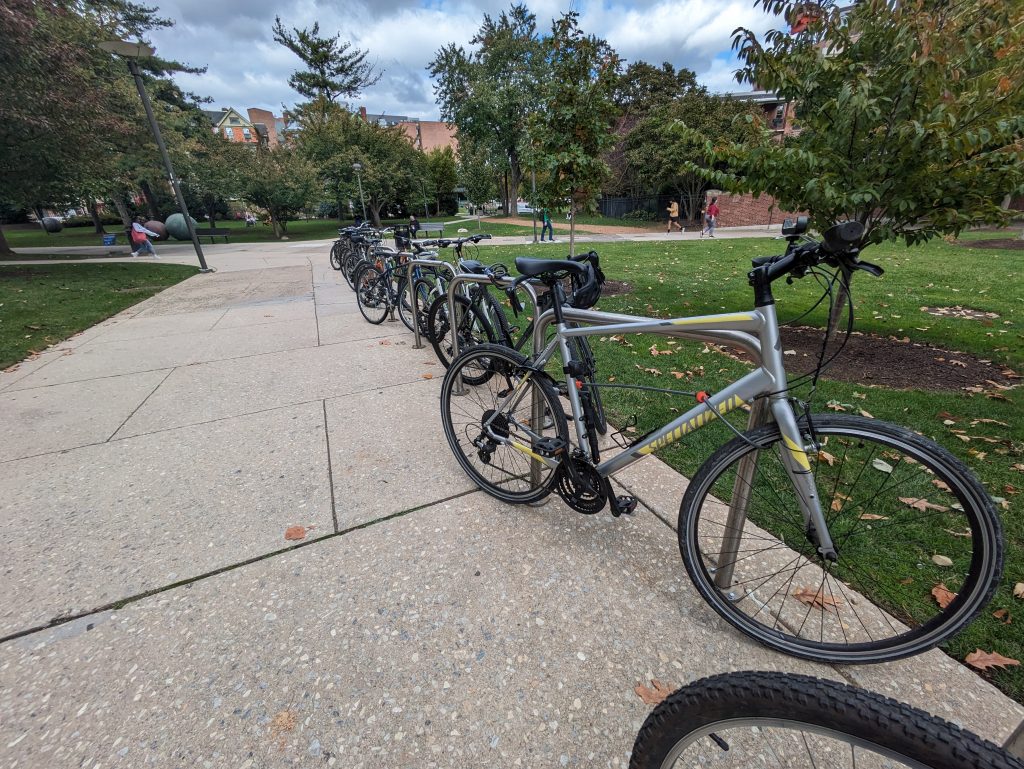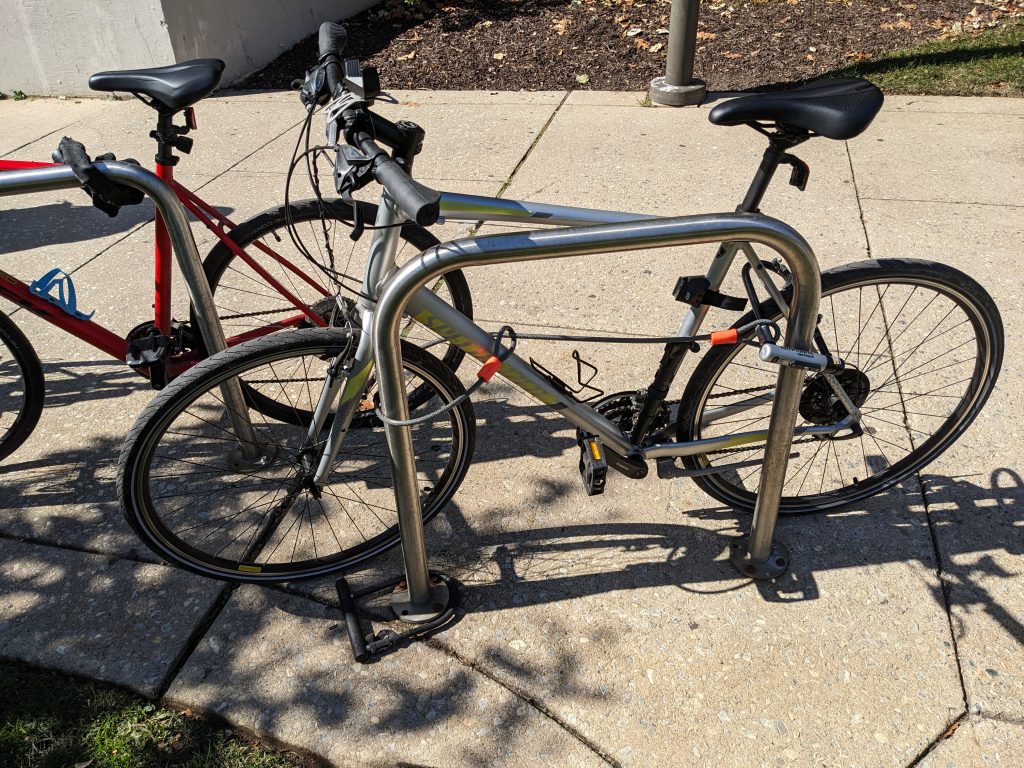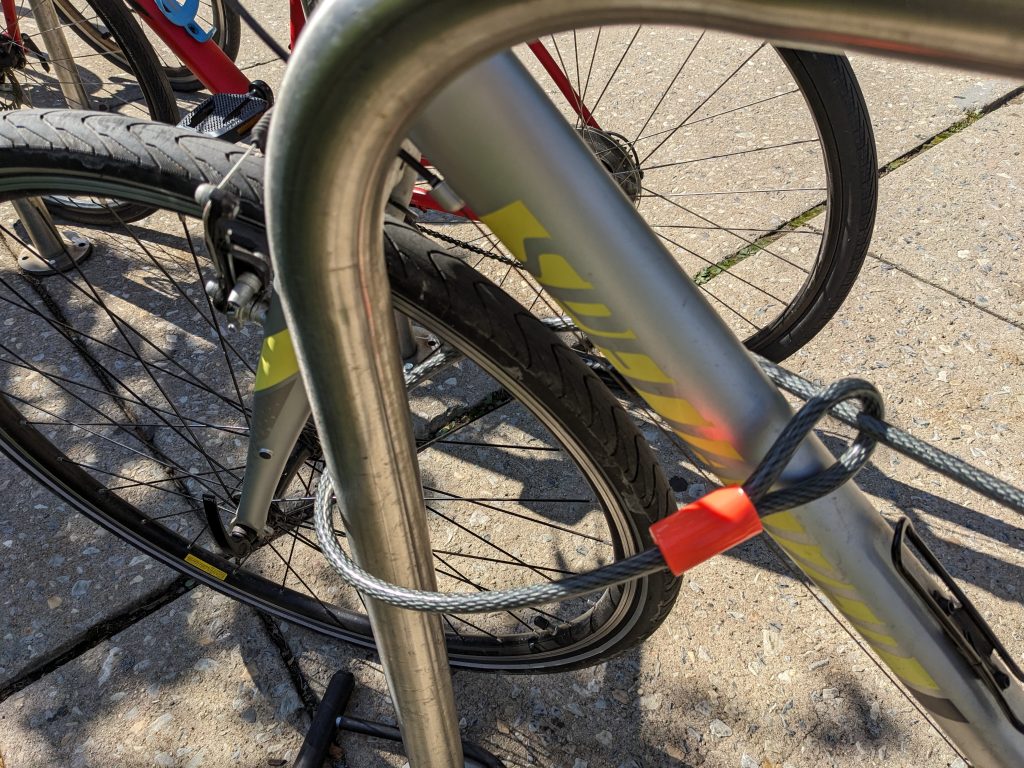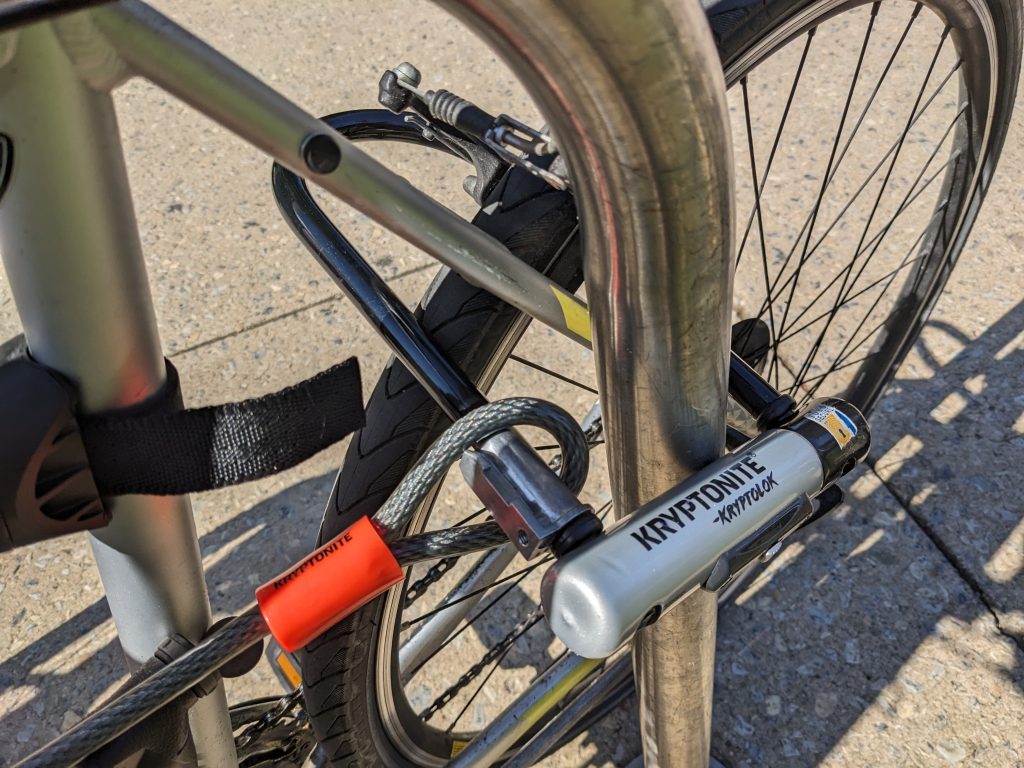
Biking has been proven to help physical and mental health, and is a climate-friendly alternative to cars, but one constant problem is bike thefts. While all bike locks are a deterrent, there are some ways to help keep a bike on campus safe.
Locking up a bike starts with what it is locked to. Many bike racks are scattered around Drexel and the University of Pennsylvania’s campus, but not all bike racks provide the same level of protection. The first test of a bike rack is to give it a firm shake: even the biggest bike lock can be defeated by a bad bike rack. The second thing to check is how the bike rack itself is secured to the ground. Some are bolted in, others are cast into the concrete, and some are chained to nearby buildings. Bike racks held in with bolts can be unscrewed and removed and chains can be cut. Look for bike racks that are firm and cast directly into the ground or sidewalk.
When a proper bike rack is not available, look for small poles with metal piping built onto them on the edge of the sidewalk. Throughout Philadelphia, these types of poles are a good spot to lock a bike, as they offer a strong and sturdy loop to hook the lock through. Their sole purpose is for bikes, so there is no need to worry “is it ok to put a bike here?”
Since these poles are not extremely common in Center City and can commonly be in use by another bike, a sturdy street sign post will do as well. This is a commonly accepted practice; just make sure that there is a sign at the top and a rounded bolt at the bottom, or people could hoist the bike up and over the top or pull the sign out of the ground.
Try not to lock your bike to a fence, whether it is someone’s handrail up their steps or in a park. These types of locations could make someone upset since fences are usually part of someone’s property, and the bike will likely look very out of place.
It is important to think about which parts of the bike are being locked to the rack, as most bikes have a few disassembly points. The two main points of disassembly are the wheels, which can commonly be removed from the bike frame without any tools, and the seat. Make sure to weave the lock through the wheels and the frame so that a thief cannot steal your wheel, or even worse, your entire frame. The front wheel is easier to remove on most bikes, since the back wheel is involved with the chain and the gear sprockets. If two locks are available, try and secure both wheels to the frame, even if one is not hooked to the actual pole. Some U-locks come with a cable for securing the front wheel.



A bike seat is another item that can commonly be removed without a tool, as a lot of bikes use a quick-release clamp to hold the seat in place. In a high-traffic area of the city, it is likely that a seat will not be taken. However it is worth considering removing the seat when leaving a bike alone for a long time. Of course, other items such as baskets, lights, helmets and water bottles are all subject to theft if left unattended and loosely connected to a bike.
The best type of lock to use according to Drexel Public Safety is a metal U-Lock, which commonly requires a key. These are thick, sturdy and nearly impossible to cut through with bolt cutters, the most common form of attack. However, they can be a pain to link through some docking locations, and might require some maneuvering to link through the wheel, frame and pole at the same time.
Wire locks are easier to work with, but are far easier for thieves to cut through since they are bendy and thin compared to U-Locks. Most cable locks can be cut completely quietly in under two seconds with the correct tools. These usually require a code instead of a key.
There is never any guarantee that your bike is completely safe in the city. Any lock is an investment in deterrence, but in the age of cordless angle grinders, any lock can be defeated. However, following this advice on where and how to lock a bike is a great start.

